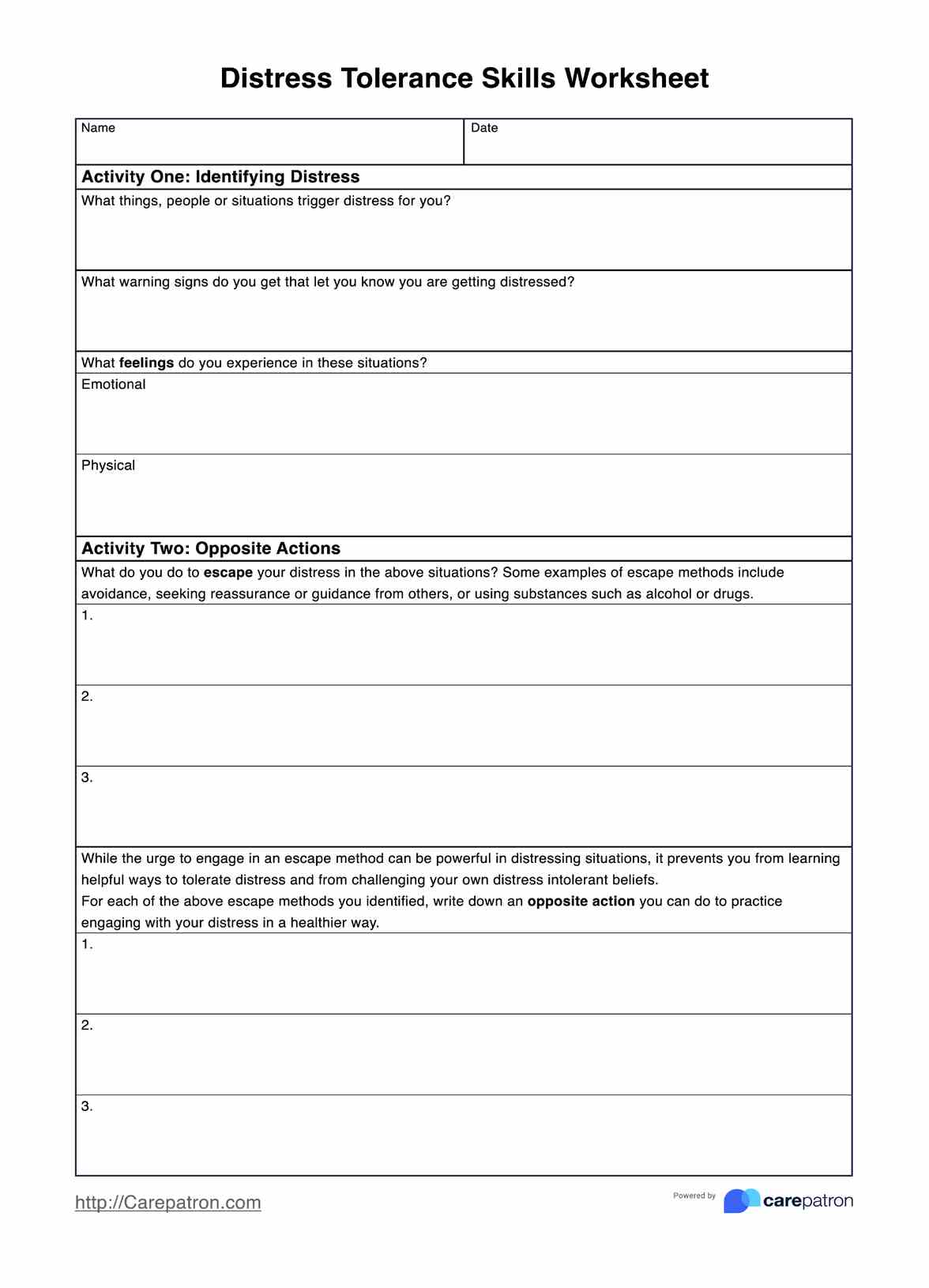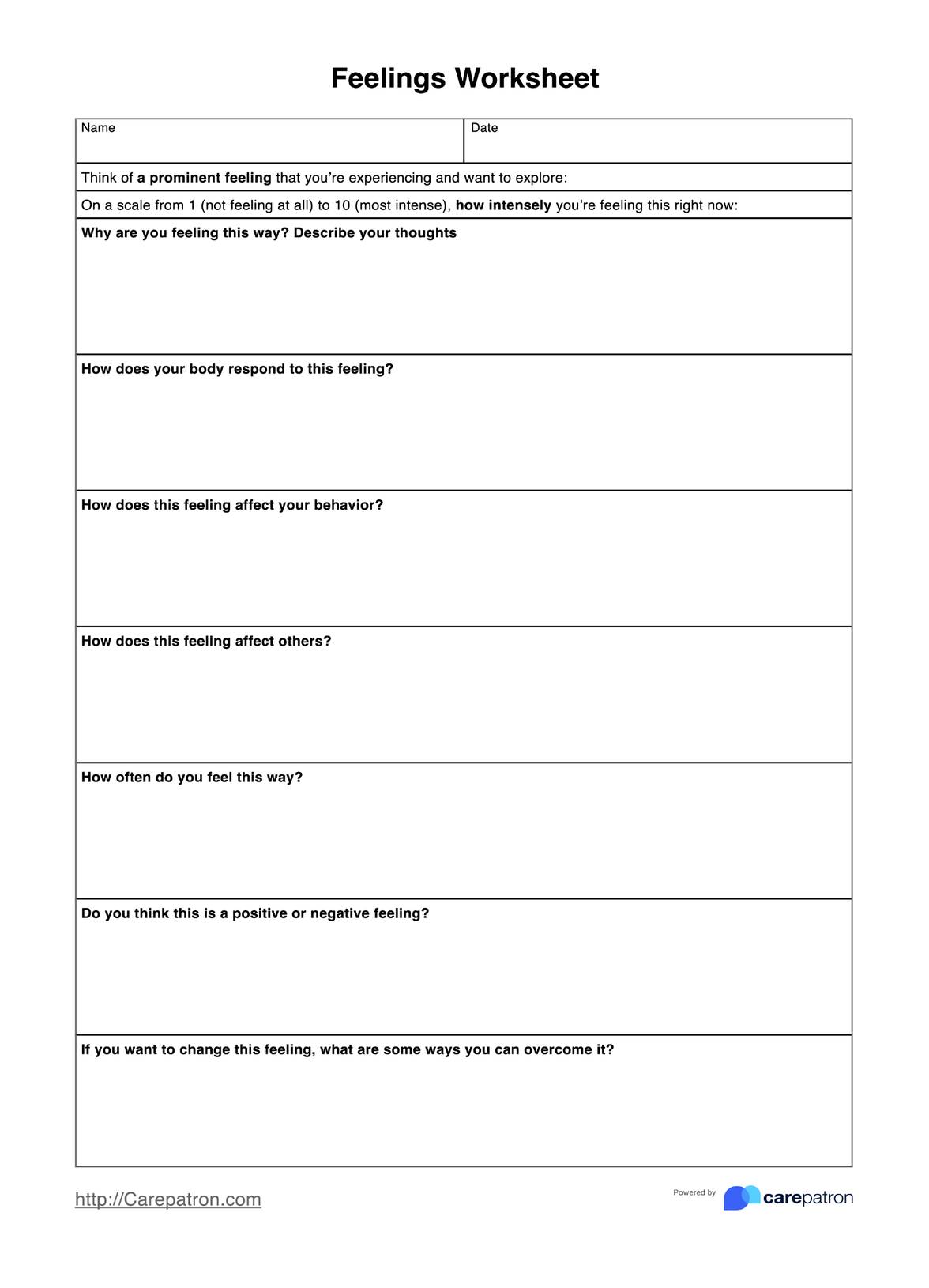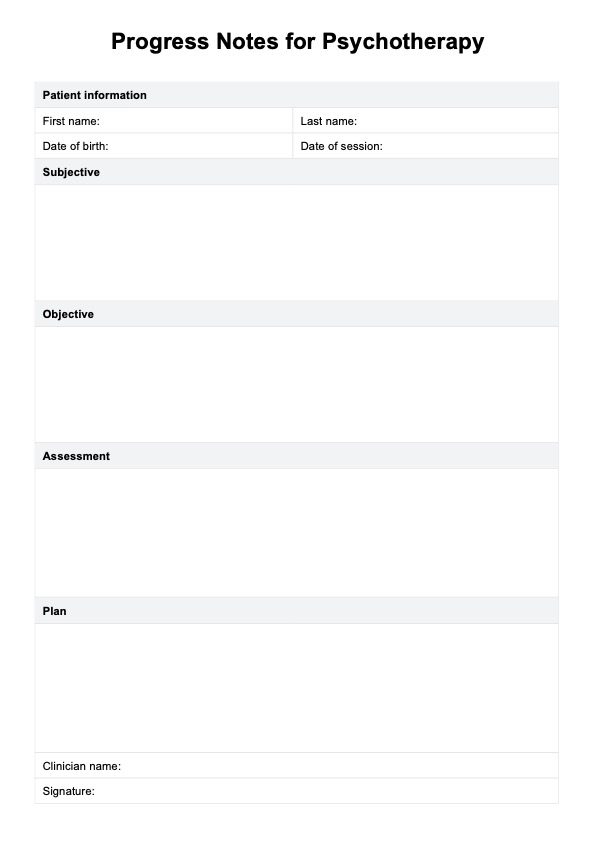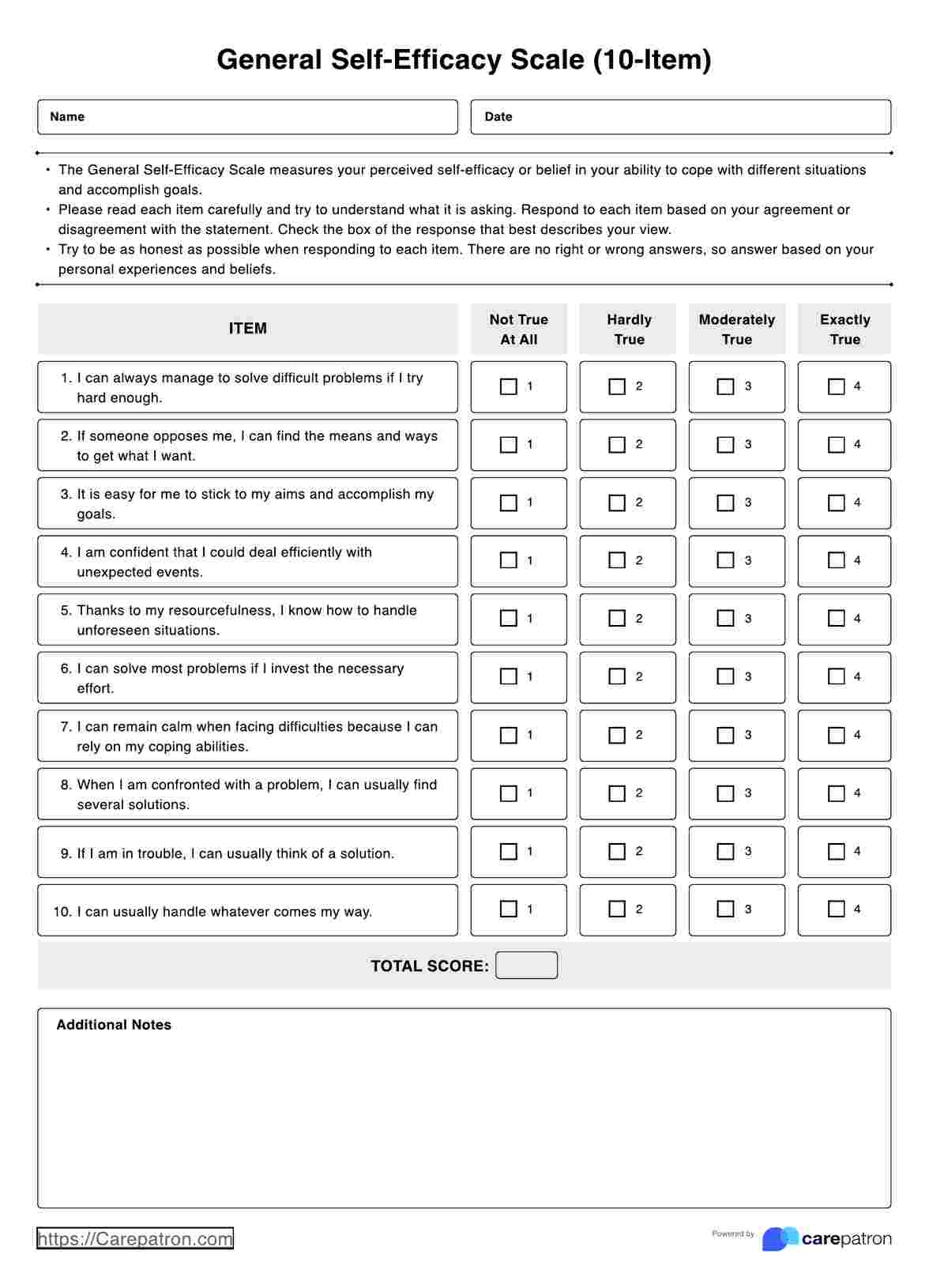Putting Thoughts on Trial Worksheet
Guide clients to learn how to support or challenge their thoughts with evidences through this free worksheet.


Irrational thoughts
Some of our thoughts come up automatically. They might be an immediate reaction, along with our emotions when we face different situations. While some of these thoughts can be adaptive and help us act fast, especially when needed, some can also negatively impact us.
It's important to address automatic negative or irrational thoughts when working with clients. These are patterns of thinking that are inaccurate, unhelpful, and often lead to emotional distress.
Here's a breakdown of what to know about irrational thoughts:
- Distorted thinking: Irrational thoughts aren't based on logic or evidence. They often involve jumping to conclusions, catastrophizing, or making assumptions about how others perceive us.
- Negative bias: Our brains tend to focus more on negative information than positive. This negativity bias can fuel irrational thoughts, leading to feelings of anxiety, depression, or anger.
- Impact on emotions and behaviors: Irrational thoughts can significantly impact how we feel and behave. They can trigger emotional distress, lead us to avoid situations or make choices that ultimately affect our well-being.
What causes people to think irrational thoughts?
While irrational thoughts can feel very real and pervasive, understanding their root causes can empower individuals to challenge them and develop healthier thinking patterns. Here's a look at some key reasons why people fall prey to irrational thoughts:
- Core beliefs and schemas: Core beliefs about ourselves, others, and the world significantly influence our interpretation of events. Negative core beliefs, often developed in early life, can develop the tendency to process information distortedly.
- Emotional reasoning: This occurs when individuals believe something to be true because it 'feels' true, even if contradictory evidence exists. This form of reasoning can overshadow objective analysis, leading to misconceptions and irrational beliefs.
- Information processing biases: The way people filter and interpret information can also give rise to irrational thoughts. For example, confirmation bias, the tendency to notice and only perceive information that confirms one’s beliefs while disregarding contradictory ones, can reinforce these distortions.
- Learning and experience: Past experiences, especially those that are traumatic or significantly negative, can shape future expectations and interpretations of similar situations.
- Stress and emotional dysregulation: High levels of stress and difficulty managing emotions can impair thinking and judgment, making it easier for irrational and exaggerated thinking patterns to come up.
Putting Thoughts on Trial Worksheet Template
Putting Thoughts on Trial Worksheet Example
What does it mean to put irrational thoughts on trial?
The putting thoughts on trial approach addresses a common challenge – unhelpful and irrational thoughts. This approach borrows the structure of a courtroom to create a framework for examining these thoughts objectively and critically.
This is how the trial analogy is put into practice:
- The thought as the defendant: The irrational thought itself becomes the "defendant" on trial based on the law. The goal is to determine if there's enough evidence to support its validity.
- The therapist/client as judge and jury: The therapist can guide the process, but ultimately, the client acts as both judge and jury, ultimately deciding the merit of the thought.
- Prosecuting and defending the thought: This exercise allows for considering evidence that both supports and contradicts the irrational thought, much like how a prosecutor and a defense attorney practice. This encourages a balanced and fair evaluation of the thought.
What is a Putting Thoughts on Trial Worksheet?
The Putting Thoughts on Trial Worksheet is a tool used in cognitive-behavioral therapy (CBT) to help individuals challenge and restructure their irrational or distorted thought patterns. This structured exercise encourages clients to evaluate the validity and accuracy of their troubling thoughts, much like a court trial, and then replace them with more realistic and adaptive alternatives.
Skills that can help people answer this worksheet
Here are some key skills that can help people engage more effectively with the Putting Thoughts on Trial Worksheet:
- Critical thinking skills: The ability to think critically and objectively is crucial when evaluating the validity of one's thoughts. Clients need to be able to examine the evidence, consider alternative perspectives, and draw logical conclusions about their thought processes.
- Emotion regulation skills: Dealing with intense emotions can make it challenging to approach the task of evaluating thoughts objectively. Developing emotion regulation skills, such as mindfulness and self-soothing techniques, can help clients maintain a more balanced and rational mindset when completing the worksheet.
- Problem-solving skills: The worksheet involves a problem-solving process where clients are tasked with identifying and addressing their irrational thoughts. Strengthening problem-solving skills, such as finding alternative solutions and evaluating the consequences of different actions, can enhance the efficacy of this exercise.
- Communication and introspection skills: Most people who are good at expressing their thoughts and feelings and engaging in self-reflection may find it easier to reflect on the irrational thoughts they want to address and the evidence supporting or challenging those thoughts.
How to use our Putting Thoughts on Trial Worksheet template
Engaging in this worksheet can lead to more adaptive and helpful thinking by guiding clients through a structured process of evaluating the evidence for and against their troubling thoughts. Here's a step-by-step guide on how to use the Putting Thoughts on Trial Worksheet:
Step 1: Identifying the thought
Start by having the client pinpoint a specific thought that has been causing distress or influencing problematic behavior. It’s important they choose one thought at a time to focus on. This allows them to better understand and process the thought at hand.
Step 2: Gathering evidence for the thought
In this section, encourage the client to list all pieces of evidence that support the validity of the identified thought. This may include past experiences, facts, or other observations that seem to justify the thought's accuracy.
Step 3: Gathering evidence against the thought
Here, the client should list evidence that contradicts or challenges the distressing thought. This might involve instances that disprove the thought, logical arguments against the thought’s validity, or evidence pointing toward an alternative explanation.
Step 4: Weighing the evidence
With all the evidence laid out, the next step is to assess the strength and relevance of the evidence, both for and against the thought. Let the client reflect on whether the thought is a fact. This assessment helps the client to critically evaluate the accuracy and helpfulness of the thought.
Step 5: Reaching a verdict
Based on the balance of evidence, decide whether the thought is a fair, accurate representation of reality or if it’s distorted, among other things. If the evidence against the thought outweighs the evidence supporting it, then it may be concluded that the thought is unhelpful or irrational.
Step 6: Develop alternative thoughts
Finally, if the original thought is deemed unhelpful or irrational, the client should work on generating more balanced alternative thoughts. Think of this as establishing order in the court or the client's mind. These alternatives should be based on evidence and more accurately reflect reality, aiming to diminish distress and promote healthier behavior.
Benefits of using this worksheet
The Putting Thoughts on Trial Worksheet serves as a practical cognitive restructuring tool. Its structured approach promotes emotional and cognitive insights, contributing significantly to therapeutic outcomes. Below are the key benefits of using this worksheet within a therapeutic setting:
Enhanced self-awareness
Working through the worksheet fosters greater self-awareness as individuals learn to identify specific thoughts contributing to distress or problematic behavior. This heightened awareness is the first step toward change, enabling a deeper understanding of how thoughts influence emotions and actions.
Improved critical thinking
The worksheet encourages individuals to examine their thoughts critically, assessing their validity by weighing evidence both for and against them. This process enhances critical thinking skills, teaching individuals to challenge automatic thoughts and opinions rather than accept them at face value.
Balanced perspective
This approach helps individuals shift from a one-sided, often negative perspective to a more balanced view of themselves and their experiences. This balanced perspective allows them to gain a more realistic outlook.
Emotional regulation
The worksheet aids in emotional regulation by challenging and replacing irrational thoughts with more balanced alternatives. Clients can then reduce their emotional distress and increase their emotional growth by altering the thought patterns that trigger negative emotions.
You can also use this cognitive distortions template and care plan template together to enhance your therapeutic approach. The cognitive distortions template helps identify and address negative thinking patterns, while the care plan template provides a structured strategy for overall treatment and progress monitoring.
References
Reddington, S. (2017). Self help CBT cognitive behavior therapy training course & toolbox. Createspace Independent Publishing Platform.
Therapist Aid. (2012). Cognitive restructuring: Thoughts on trial (worksheet) . Therapist Aid. https://www.therapistaid.com/therapy-worksheet/putting-thoughts-on-trial
Commonly asked questions
Allow them to focus on recurrent, distressing thoughts that significantly impact their emotions and behaviors, especially those that contribute to anxiety, depression, or stress.
The worksheet can be used to address various cognitive distortions, such as overgeneralizations, catastrophizing, and all-or-nothing thinking.
Clients may struggle to identify or evaluate the evidence for their irrational thoughts accurately, or they may have difficulty generating alternative, more realistic thoughts.


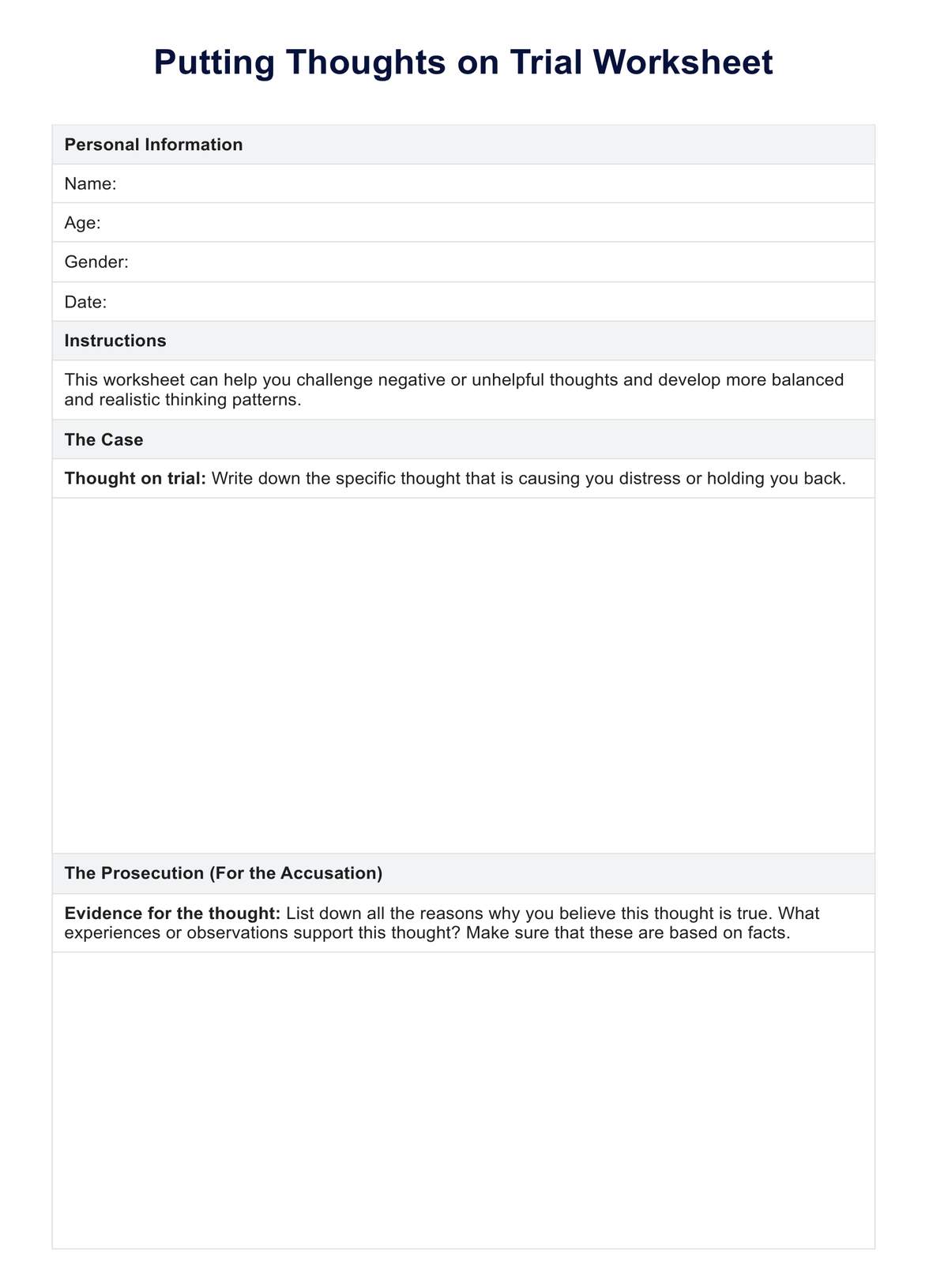
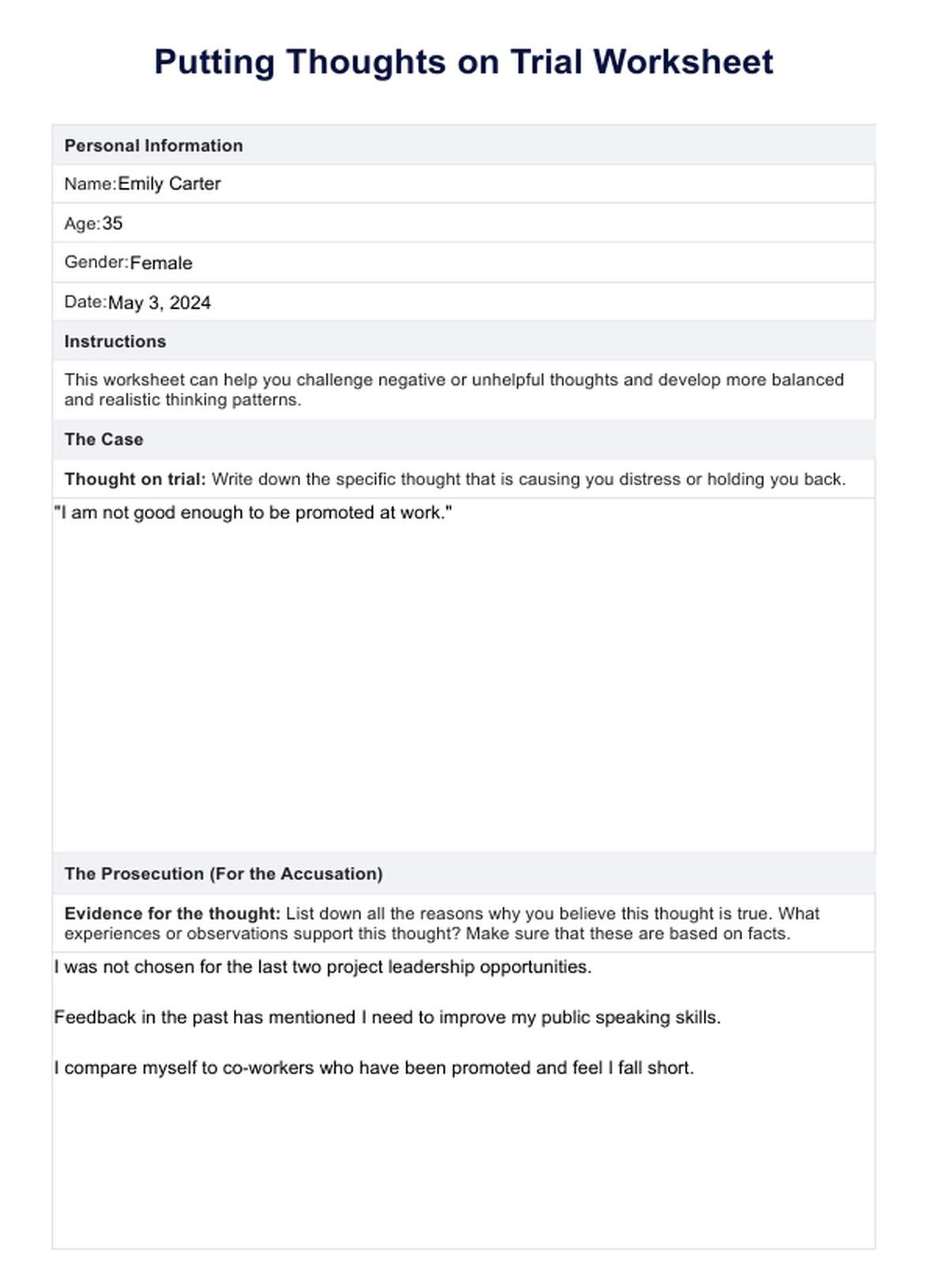
















-template.jpg)




















































































